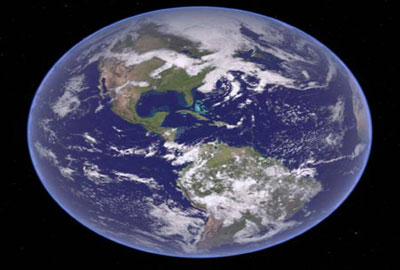 London:
London: In what could provide a new explanation for the speed of evolution and has implications for the interpretation of climate models, researchers have found that the movement rate of plates carrying the Earth's crust may not be constant over time.
"Our results challenge the view that the rate of plate movement is stable over time," said Kent Condie, professor from New Mexico Institute of Mining and Technology in the US.
The Earth's continental crust can be thought of as an archive of its history, containing information on rock formation, the atmosphere and the fossil record.
However, it is not clear when and how regularly the crust formed since the beginning of the Earth's history 4.5 billion years ago.
Another study led by Peter Cawood, professor from University of St. Andrews in Britain, examined several measures of continental movement and geologic processes from a number of previous studies.
They found that from 1.7 to 0.75 billion years ago (termed the Earth's middle age), the Earth appears to have been very stable in terms of its environment, with little in the way of crust building activity, no major fluctuations in atmospheric composition and few major developments seen in the fossil record.
This stability may have been due to the gradual cooling of the Earth's crust over time, Cawood suggested.
"About 0.75 billion years ago, the crust reached a point where it had cooled sufficiently to allow modern day plate tectonics to start working, in a particular way allowing subduction zones to form (where one plate of the crust moves under another)," Cawood noted.
 London: In what could provide a new explanation for the speed of evolution and has implications for the interpretation of climate models, researchers have found that the movement rate of plates carrying the Earth's crust may not be constant over time.
London: In what could provide a new explanation for the speed of evolution and has implications for the interpretation of climate models, researchers have found that the movement rate of plates carrying the Earth's crust may not be constant over time.